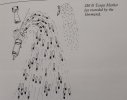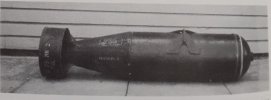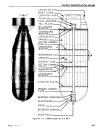Hi all.
Just about to start my group build mosquito, and realise I need a rather vital bit of info….I know next to nothing about RAF bomber loads and bomb colours…..or even what marker flares looked like. Shocking I know, so here’s the question:
Does anyone have access to information on the bomb load carried by pathfinder mosquitoes?
I know Len Cheshire favoured a single marker flare, so what did it look like, where was it loaded, and what colour was it?
Plenty of info around regarding how 617 used these aircraft, but not much I can find on how they were configured….I would assume (might be wrong) the wing bombs were not carried, but the racks were kept, mostly because 617 used to nick it’s mosquitoes from wherever it could get them, so they would be needed when the planes were given back.
I assume they kept the nose guns in as well?
Cheers in advance….and if this thread is in the wrong place could one of the mods do the honours? I’ve posted it here because I’m building in the group build….
Just about to start my group build mosquito, and realise I need a rather vital bit of info….I know next to nothing about RAF bomber loads and bomb colours…..or even what marker flares looked like. Shocking I know, so here’s the question:
Does anyone have access to information on the bomb load carried by pathfinder mosquitoes?
I know Len Cheshire favoured a single marker flare, so what did it look like, where was it loaded, and what colour was it?
Plenty of info around regarding how 617 used these aircraft, but not much I can find on how they were configured….I would assume (might be wrong) the wing bombs were not carried, but the racks were kept, mostly because 617 used to nick it’s mosquitoes from wherever it could get them, so they would be needed when the planes were given back.
I assume they kept the nose guns in as well?
Cheers in advance….and if this thread is in the wrong place could one of the mods do the honours? I’ve posted it here because I’m building in the group build….





